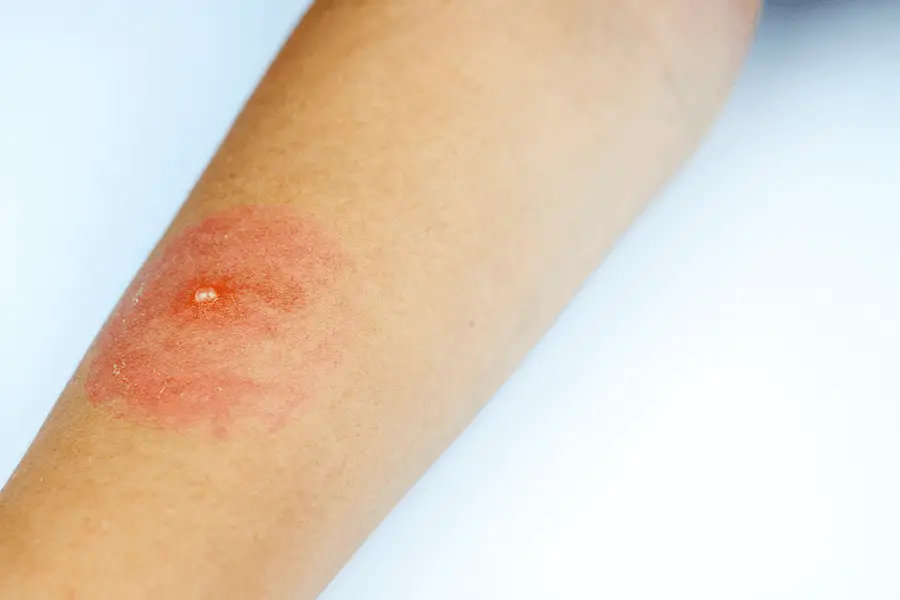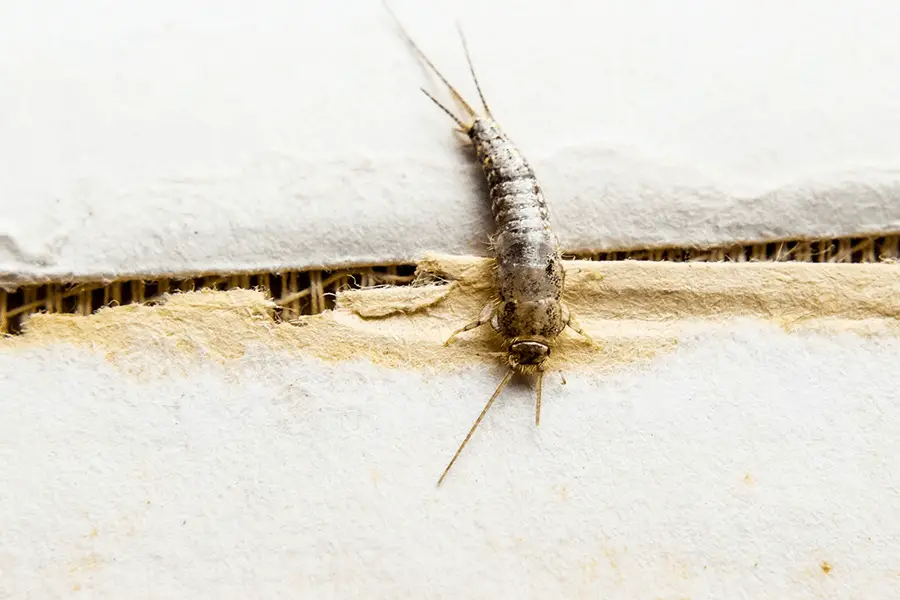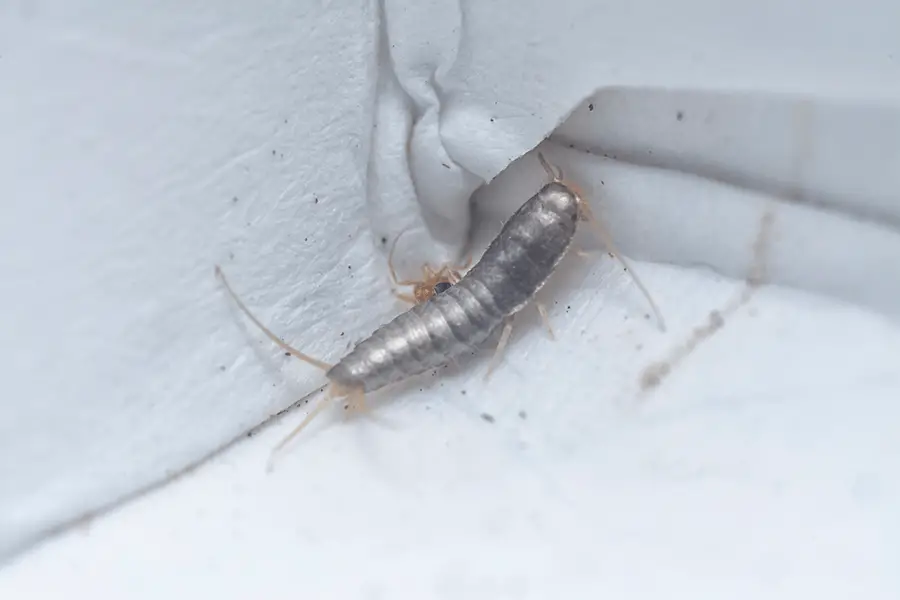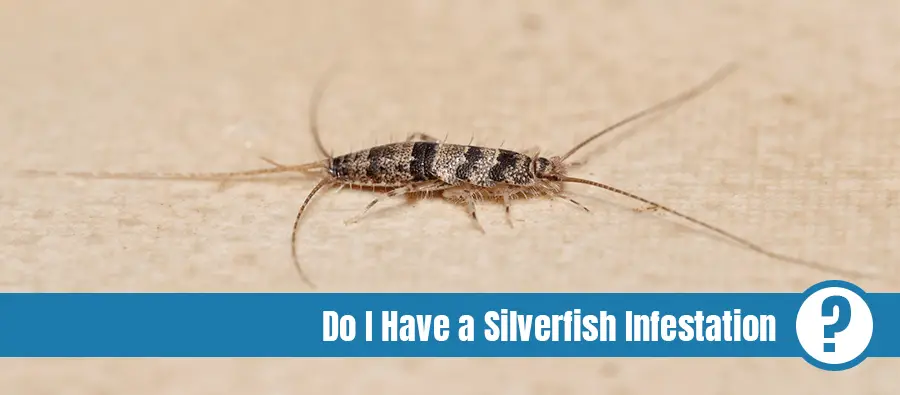Have you seen a little, silvery creepy insect flitting around your home like a fish? Silverfish are a common pest in most households and even libraries, where they feed on the paper of thousands of books. But is sighting one silverfish enough to indicate that you have a silverfish infestation?
There are a handful of signs that can indicate whether or not you have a silverfish infestation in your home. If you regularly spot silverfish, or have seen silverfish droppings, shed skin, or yellow stains around your home, chances are you have a silverfish infestation.
If you think you might have a silverfish infestation, you might also be worried about what that might mean for you. Are silverfish dangerous to humans? Do they cause damage to your home? In this article, we’ll answer these questions and help you identify five signs of a silverfish infestation.
Table of Contents
What are silverfish and what do they look like?
Silverfish are tenacious little pests that are long and tear-shaped with soft, flat, wingless bodies. They have gray or brown scales (hence their name) which give them a shiny metallic, pearl gray appearance. Silverfish are usually less than a half-inch in length and have six legs, two antennae, and three long bristles. They are sometimes also called bristletails.
Silverfish are nocturnal, so you’ll be less likely to see them throughout the day unless you move something that a silverfish was under or inside of. If this sounds like the kind of insect you’ve seen around your house lately, then you probably have a silverfish infestation.
Why are there silverfish in my home?
It’s not uncommon to find a silverfish in your home, although we certainly understand that it’s not a pleasant experience. As with other small pests, silverfish can make their way inside through small cracks, gaps, or holes in your walls. For example, they can get inside if you have a door that isn’t flush with the ground.
Silverfish are known for being able to survive almost any environment. However, they’re particularly attracted to humid areas, so you might see them in your basement, attic, or bathroom.
As with other pests such as cockroaches, the reason you have silverfish in your home is because they deem it a suitable place to live and reproduce. Silverfish feed on household items that contain starch, sugar, or protein; most often things like paper, glue, clothing, flour, oats, or cereal. They’ll even eat hair, dead skin, or dandruff!
Are silverfish harmful to me or my home?
Silverfish look pretty creepy, so many people believe they’re harmful. Luckily, these insects don’t carry diseases or harm humans and there’s currently no scientific proof that implies that they are poisonous or dangerous.

However, silverfish can trigger allergic reactions in some people when they shed their dry skin and scales. Another downside to having a silverfish infestation is the fact that they can cause damage to your property or possessions such as wallpaper, books, or clothing. If left unchecked, they can also contaminate your food supply including any grains, flours, or cereals that they have access to.
So let’s make sure you know how to properly identify a silverfish infestation so you can get it under control if necessary!
5 Signs of a silverfish infestation
As with other potentially problematic pests, ideally you want to be able to identify a silverfish infestation early on. The earlier you catch an infestation, the easier it’ll be to take care of it. So if you’re wondering whether you might have a silverfish infestation in your home, you can confirm their presence with these five signs of a silverfish infestation.
1. Continually spotting silverfish
There’s no better indication of a silverfish infestation than spotting live silverfish moving around your home. If you keep seeing silverfish moving around your home (especially in different places), then it could be a sign that you’ve got an infestation on your hands.
We’ve described what silverfish look like. So once you’re certain that the insects you’ve been seeing in your space are silverfish, there’s not much more you need to know.
And although just seeing one silverfish around doesn’t necessarily indicate an infestation, it could be a good reason to check for some of the less obvious signs of a silverfish infestation.
2. Silverfish droppings
Droppings are a very clear sign that you’ve got a pest around. But how do you know when the droppings you’re spotting are from silverfish?
Silverfish droppings look like small peppercorns; they are small, black, and round. If you’ve seen these droppings in your attic, pantry, or bathroom, then you might have a silverfish infestation.
However, you’ll need to be extra careful so you don’t mistake the droppings of other pests for that of a silverfish or mistake ordinary dust or dirt for droppings.
Plus, you may want to look out for silverfish feces in more obscure areas like the middle of books or magazines where they tend to hideout. Ultimately, the best way to confirm that you have a silverfish infestation is by checking for other signs or by keeping an eye out for the little critters themselves.

3. Feeding marks such as holes and etches
A sure-fire sign that you’ve got silverfish infestation is spotting damage to your property or belongings. Silverfish can leave trails or make holes as they consume various household materials like books and even wallpaper. If you’re suddenly finding holes in your wallpapers, books, and magazines, it could be a sign that silverfish are having a feast in your home.
Silverfish are big on starchy foods, so you may find damage to your storage containers or bags with starchy foods like cereals, flour, oats, and other high-sugar foods.
Lastly, silverfish even feed on clothes; particularly, very light clothing materials. If you find damage on thick, heavy materials, then you’ve likely got a different pest problem, such as moths.
4. Yellow stains
Yellow stains are another sign that silverfish have been around a particular area. The yellow stains appear like dust that’s left on the surface as these insects molt (it’s not necessarily an indication of urine). If you’ve consistently noticed unusual yellow stains on your wallpapers, clothes, or books, it could be an indication of a silverfish infestation!
It might be difficult to notice the yellow stains left behind by silverfish if there’s only a few of them around, since they tend to hide out in dark, moist areas. So if you’re trying to find out if you have an infestation, you could try checking these dark areas where the silverfish might be hiding.
5. Shed skin
Silverfish shed their skin in their nymph and adolescent stages, so sighting their empty casings is a clear signal of their presence in your space. But silverfish are quite small in size, so it’s very easy for you to miss them.
If you find their shed skin easily, it’s a sure sign that your home is infested with silverfish, as the shed skins only get noticeable when there are many silverfish around. Keep an eye out for the shells in places like the kitchen, basement, or bathroom.

How to deal with a silverfish infestation
If you saw one silverfish in your home, but were unable to confirm their presence with any of the above signs, you might not have a silverfish infestation. For reassurance, you can make an effort and inspect the dark corners of your home, or open a few old books. If even then you don’t find signs of silverfish, then breathe easy.
If, however, you were able to find ample evidence of silverfish in your home, you probably have a silverfish infestation. Silverfish breed very quickly, so your minor infestation can become severe if you don’t act fast. We know that it’s frustrating, but at least now you know what the problem is and can handle it accordingly.





